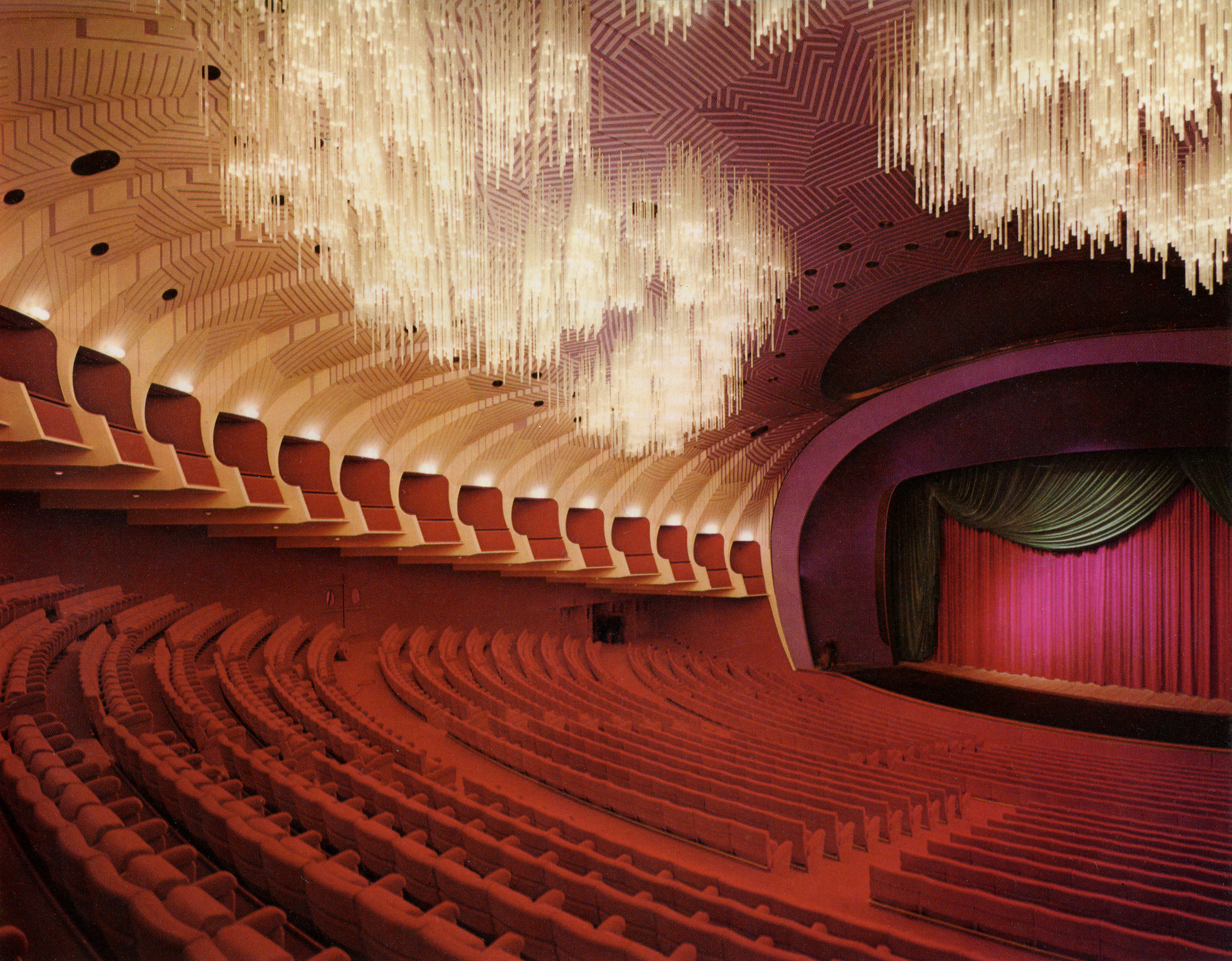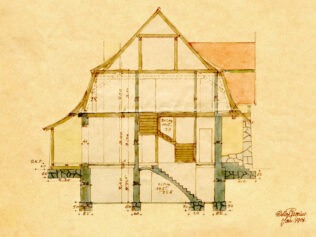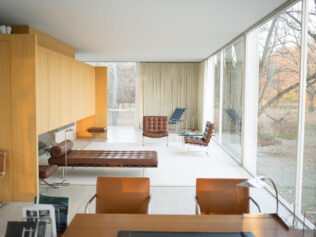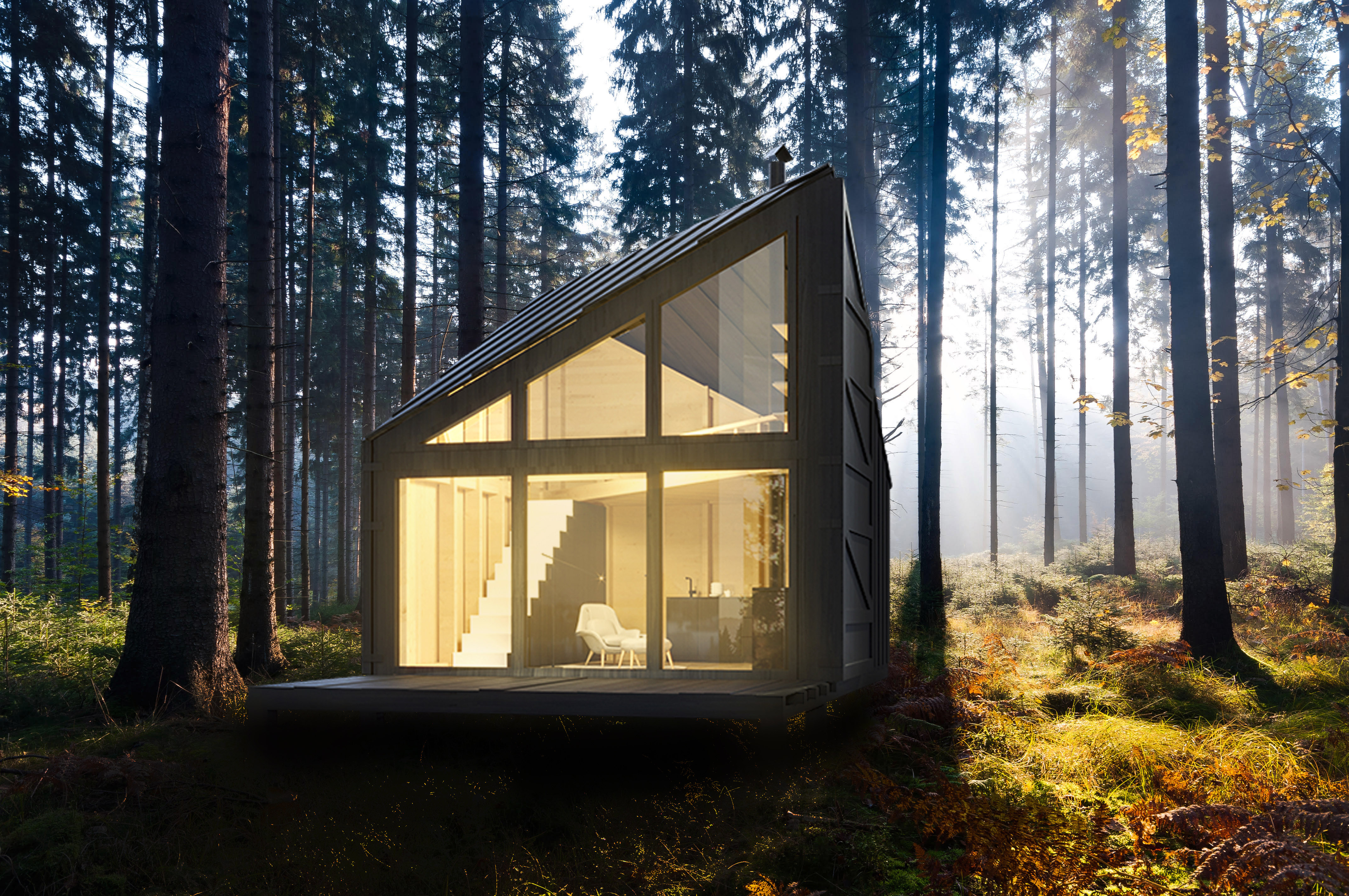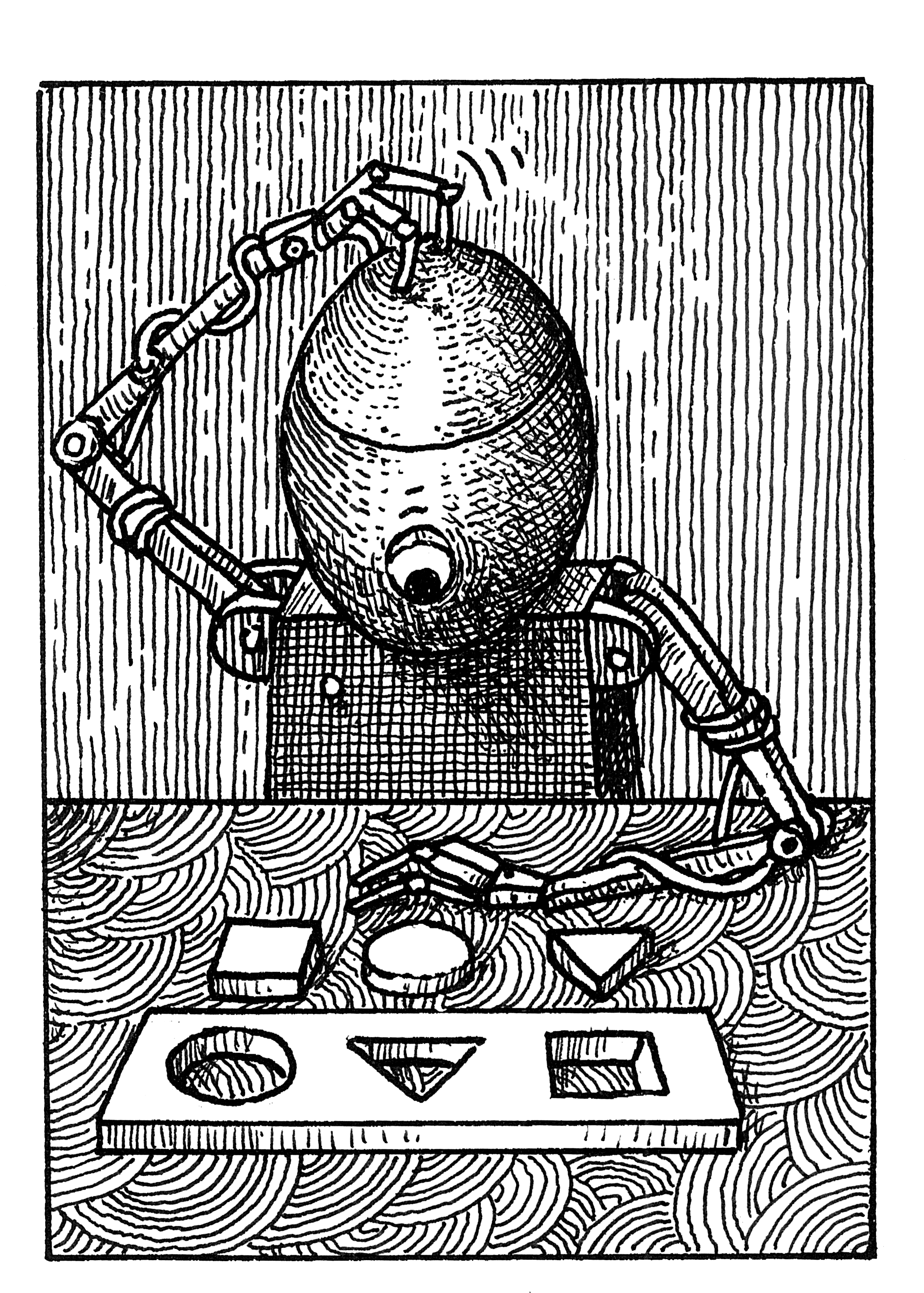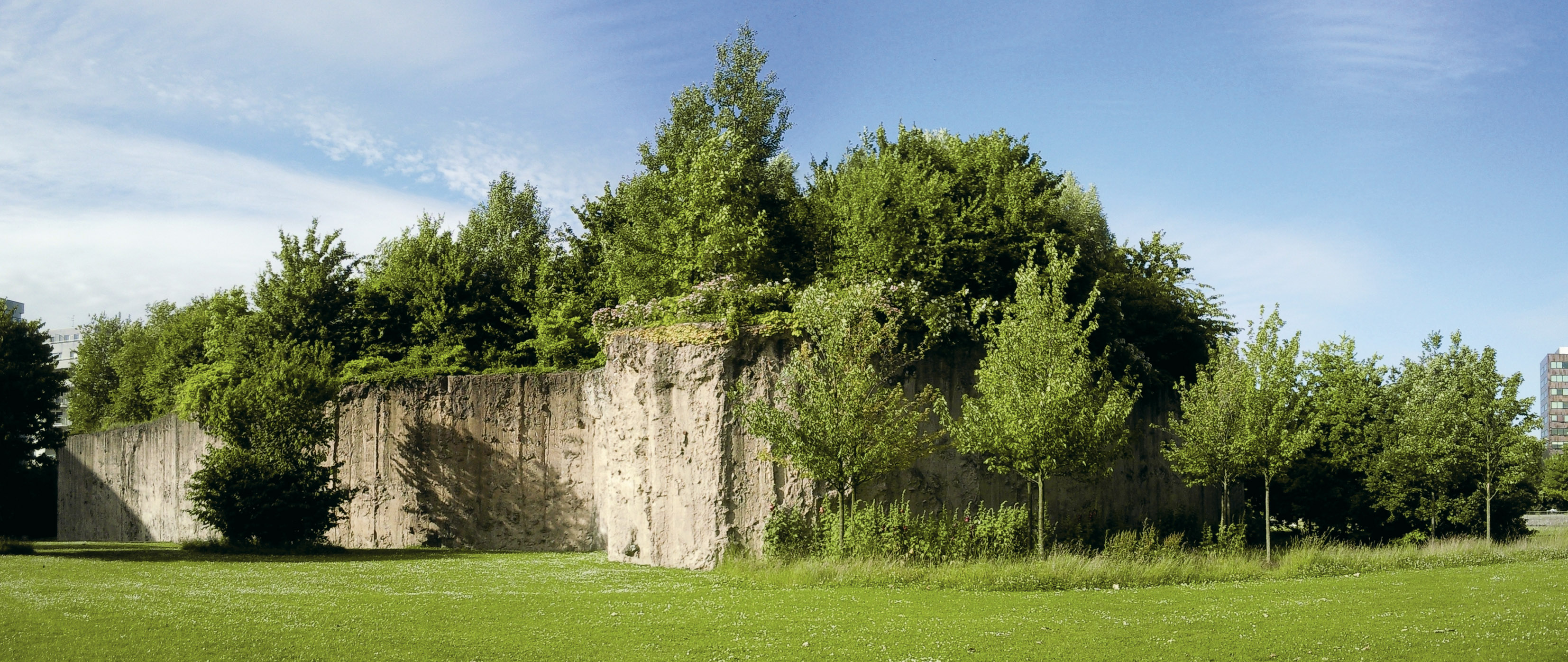
A golden child, a son overshadowed by his father; an architect, decorator, constructor, aerobatic pilot, racing driver, photographer. He was Carlo Mollino.
“Creating architecture and fist-fighting: to him, those things were the issue of morality; he had no material issues to worry about,” wrote Carlo Mollino in 1933 about his alter ego, Ettore Lavazza, aka Oberon. The Life of Oberon was a fictional biography of a nearly 30-year-old eccentric architect from Turin, who lived beautifully and died young. The novel, published in the 1930s in an Italian architecture magazine Casabella, was an account of Mollino’s fascination with death and what comes afterwards. He grappled with this topic for his whole – as it turned out, rather long – life.
Carlino and Torino
Mollino was born in Turin in 1905. Being a fierce local patriot, he boasted to his friends that he had never spent a night in Milan, located 140 kilometres east from Turin. The two cities have always fought for domination in Northern Italy. Still, Mollino’s relationship with the capital of Piedmont was bittersweet. Critics reacted rather sceptically to his designs (usually located in Turin or on the city’s outskirts). Nowadays, his buildings are considered some of the most fascinating examples of post-war Italian architecture. And yet, when Mollino created them, the designs were considered way too modern for the tastes of the local societé of Turin. This is not, however, a story of an unappreciated artist who starved to death without recognition. Mollino lived with his wealthy parents for his entire life, which made it possible for him to focus on his passions, and of those he had many. Sometimes he was an architect, and sometimes he chose to be an interior designer or to design furniture and clothes. He was an aerobatic pilot, a race driver (of cars of his own design, of course), a photographer, set designer, passionate skier, writer, and the holder of numerous patent certificates. On top of that, he loved literature and cinema. He had an opinion on any given topic, which led him to write several academic-like books – for example, about the theory of schussing (because why not?!). Still, architecture remained his greatest passion until the day he died.
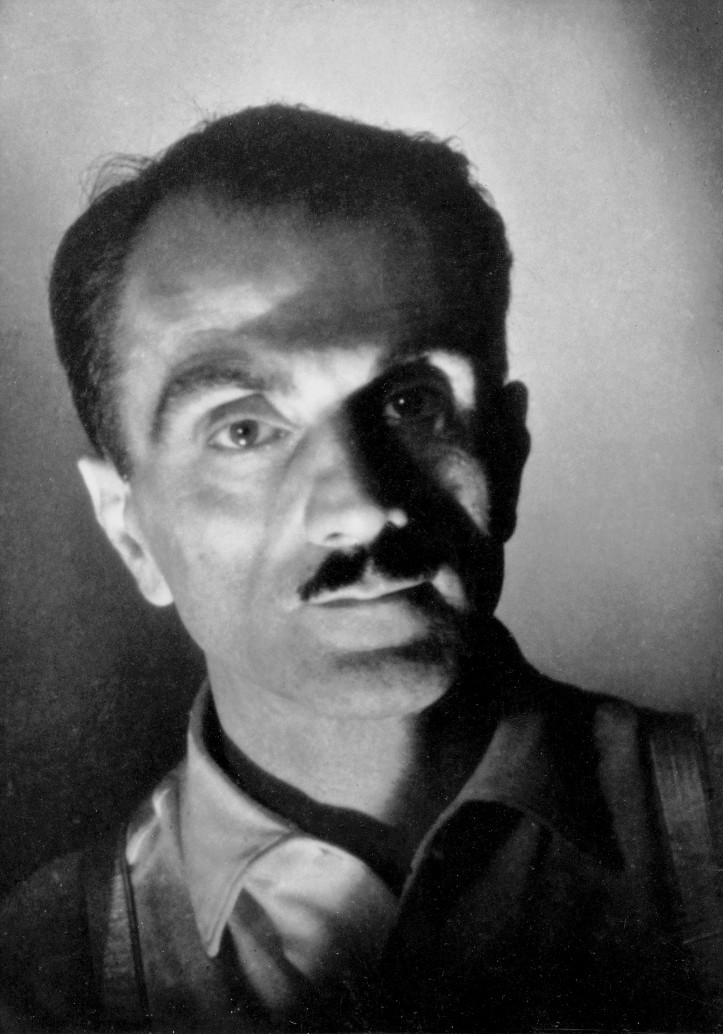
Carlo Mollino’s genius was already sparkling in the pages of his first-grade notebook, exhibited in the Alinari Museum in Florence. The notebook, dated 1911, is filled with panoramic drawings of the city, with all points of perspective depicted accurately. Under the picture, there is a comment from his teacher: “Carlino made this perspective drawing without any help.” Several months later, little Carlino would make drawings of a car engine cylinder and a photo camera, both presented as a horizontal section. Since early childhood, he drew with both hands, often at the same time.
Just as it was with his city, Carlo’s relationship with his father was also a difficult one. Eugenio Mollino was a very respected and talented engineer, who made his fortune erecting nearly 300 buildings in Turin alone. Carlo considered Eugenio his role model. For his whole life, Carlo proudly included the projects they made together in his portfolio – they had shared a studio until his father’s passing, and Mollino continued to work there afterwards. Still, Carlo often accused Eugenio of being “untidy”, or “good for nothing”. The exasperated engineer couldn’t stand Carlo appearing in the studio whenever he pleased, usually in late evening hours. Sometimes Carlo would disappear for days, as if hibernating, only to emerge and spend weeks on end working frantically, as if consumed by some creative fever. He cared for nothing but perfection. “Everything is permitted provided it is fantastic enough!” he claimed.
After his father’s passing in 1953, Mollino redirected his attention to his other two passions: aerobatics and car racing. In 1955, together with Enrico Nardi and Mario Damonte, he designed a sports car they named Bisiluro Damolna. The vehicle took part in the 24 Hours at Le Mans, where it broke the speed record for 750cc engines for the next two years. The beautiful streamlined design made the car look like two torpedoes fused together. Its most unusual characteristic was that the driver would sit on the one side, while the other was occupied by the engine, installed at the same level. Mollino always strived to break conventions and cross any borders. Speed and movement would forever remain among his key inspirations.
The city, Baroque, a machine
Bruno Zevi, the most prominent post-war Italian architecture critic, wrote about Mollino: “He was one of the most brilliant and most enigmatic avant-garde artists, uncompromisingly unconventional and radically individualist. Mollino existed in the realm of independent inventors such as Leonardo da Vinci or Buckminster Fuller. […] The years of his studies overlapped the savage times of the ‘Second Futurism’. Still, he fought off the possibility of being linked to any person or group. He did not identify with the futuristic tendencies, and yet he’d inherited Marinetti’s love for the dynamic forms. The world of machines was always a major point of reference in his aesthetics. As for Le Corbusier, the only cultural impulse Mollino took after him was his sensitivity to the logics of industrial production. All this was, however, fuelled by his love for organic forms which he integrated into his projects, enjoying the possibility of giving them double meaning.”
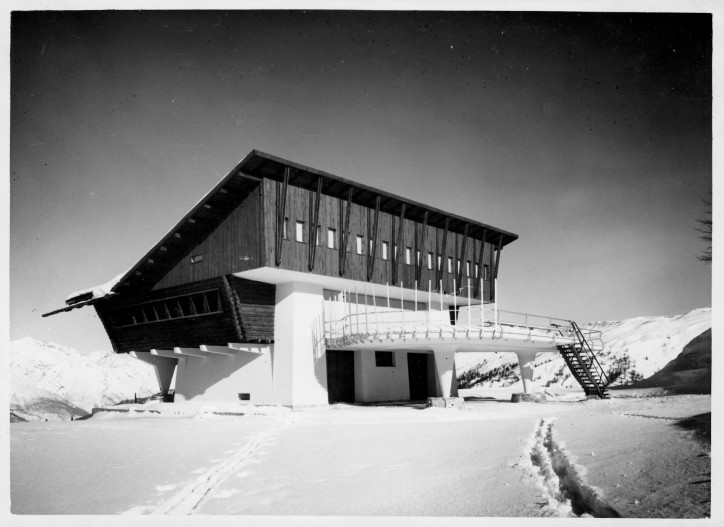
Ambiguity would, over time, become Mollino’s trademark. Anthropomorphic shapes of his furniture designs could be considered formally whimsical, if not for the fact they did not contain a single superfluous element. It was this outstanding ability that made Mollino not only an exceptionally talented artist, but also an engineer with a remarkably solid background. Parts of his furniture designs looked like human pelvises or spines, making them similar to unspecified bodies in movement. Since Mollino’s death in 1973 up until the 1990s, his projects were forgotten by the world of design, scattered around Turin’s warehouses and second-hand furniture shops. Today, only the richest can think of purchasing a piece. In 2000, an oak-and-glass coffee table, designed by Mollino in 1948, was sold at an auction in Christie’s in New York for a whopping $3.8 million. The starting price was $200,000.
Ambiguity was also his modus operandi in architecture. Mollino designed modern buildings, drawing generously from the aesthetic of Baroque and vernacular architecture. His surrealist edifice of the Turin Equestrian Association from 1937 (which, despicably, was demolished 24 years later) was made of organic forms that boldly confronted the rationalist impasse typical for the Italian architecture of that time. In 1948, he designed the ski lift in Lago Nero in the Piedmont Alps. The construction was a unique example of merging the traditional local architecture with venturesome modern solutions. On a concrete base with protruding brackets, he added a wooden top, futuristic in style but made of logs. Then, he added a broad terrace, supported on two thin cone-shaped columns, broadening towards the top. The American architecture critic G. E. Kidder Smith described the building as “the most three-dimensional work of modern Italian architecture.”
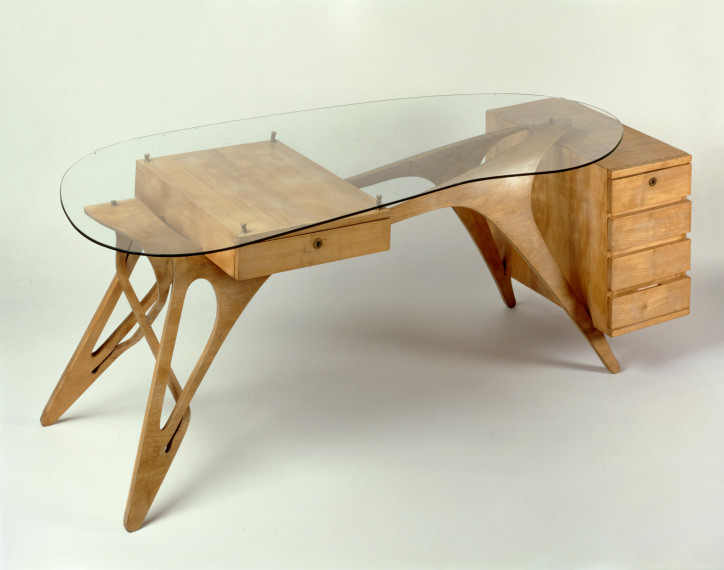
It is also worth mentioning the extraordinary building of the Royal Theatre in Turin, built in the 1960s. The edifice is hidden behind the reconstructed 18th-century façade, the plan looks like a woman’s waist, and the main room inside is egg-shaped, both in the floor and vertical projection. Mollino’s goal was to have the spectators’ attention focused exclusively on the stage, blurring out everything else. The hall he’d come up with was a great cocoon, lined with a red carpet halfway up. On the white. dome-like ceiling, supported by 40 visible ribs, there are balconies and hundreds of thin lamps that cast a delicate, soft light. Mollino also decorated the ceiling with a geometric purple drawing. The closer it gets to the stage, the denser the pattern gets, therefore becoming a subtle visual indicator for the spectator, drawing the eye to the middle of the room. Thanks to these solutions, everything outside the stage becomes part of a hazy, ethereal world. It was no accident. Mollino had been inspired and fascinated by surrealist and oneiric motifs since a very young age. In the 1930s, he had bought all issues of the Parisian Minotaure magazine where Dalí, Breton, Tzara, Giacometti and Picasso published their works. The fluid forms and illusionist-like games favoured by Mollino were also strongly inspired by Baroque architecture. After all, it was in Turin where Guarino Guarini and Filippo Juvarra were active in the late 17th and early 18th century. Those architects were among the most talented artists of the mature and late Baroque. Encountering their projects daily since early childhood must have inspired Mollino to some extent, too.
Warrior at rest
Mollino reached the mastery of allusion and ambiguity in the most enigmatic of his projects: a secret apartment in central Turin. The architect bought the apartment in 1960 and then spent eight years decorating the interior. Almost nobody knew about it, except some of Mollino’s close friends and… a flock of exotic dancers and stripteasers. The architect often had the ladies over in the dark of night, having met them at various clubs in Turin (yes, the great Mollino didn’t mind designing interiors of night clubs!). Even though he kept his most precious treasures in the apartment and decorated everything with meticulous care, Mollino never moved in. His project was an amalgamate of multiple styles, often bordering on kitsch. Quilted pink armchairs, pastel-coloured draperies, augmented large-format forest prints serving as wallpaper, sliding Japanese doors, walls lined with mirrors, a Louis XV mantelpiece. Heavy velour curtains in dark colours met cheetah-print wallpapers. Designer furniture from the second half of the 20th century (such as the Tulip chairs by Eero Saarinen) stood next to very classic-looking pieces.
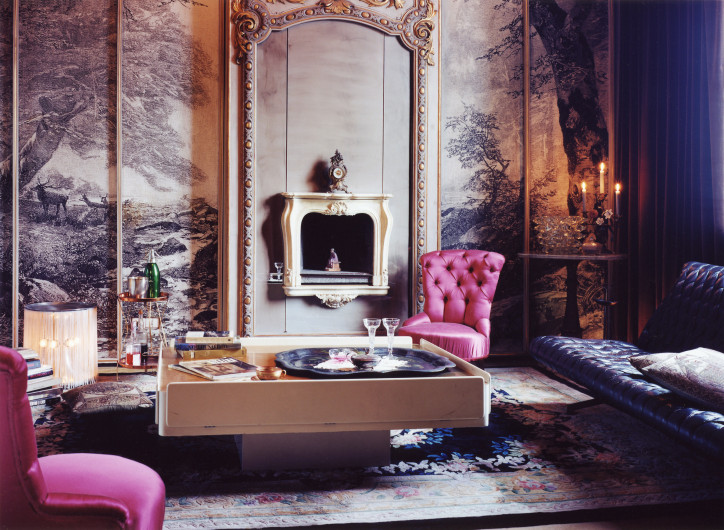
Until recently, it was thought that Mollino’s Via Napione apartment was just a place for an old bachelor to keep his favourite objects, fulfil his erotic fantasies, or enjoy another one of his many passions: photography. It was there that he created many of the 1200 carefully-arranged Polaroid nudes of women he’d met randomly during his night-time escapades. Today, those pictures can be admired at art exhibitions all over the world.

The apartment is looked after by its custodian Fulvio Ferrari, who is also the greatest expert on Carlo Mollino’s works. When analysing Mollino’s tractate on photography from 1949 – Il Messaggio dalla camera oscura – Ferrari noticed a photograph depicting a bust of Tiye, wife to pharaoh Amenhotep III, who was also passionate about architecture. It turned out that throughout his life, Mollino collected books on Egyptology and was fascinated by ancient Egyptian theories about what happens to the human soul after the death of the body. To the very few friends who knew about the apartment, he said it was “the warrior’s home of rest”. Ferrari connected all the dots and came up with a theory of his own. He believed Mollino wanted the apartment to be an eternal home for his soul. Therefore, all the objects the architect accumulated there were supposed to accompany him to the afterlife.
Was that really the purpose of his secret hideaway? We will never know. Wherever Mollino went, ambiguity followed. The architect passed away on 27th August 1973 in his office. He was 68 years old. What irony! Instead of dying in the place he’d been carefully preparing for this very occasion, he met his end in a studio designed by his father. And in there, out of respect for Eugenio, Mollino had never changed a thing.
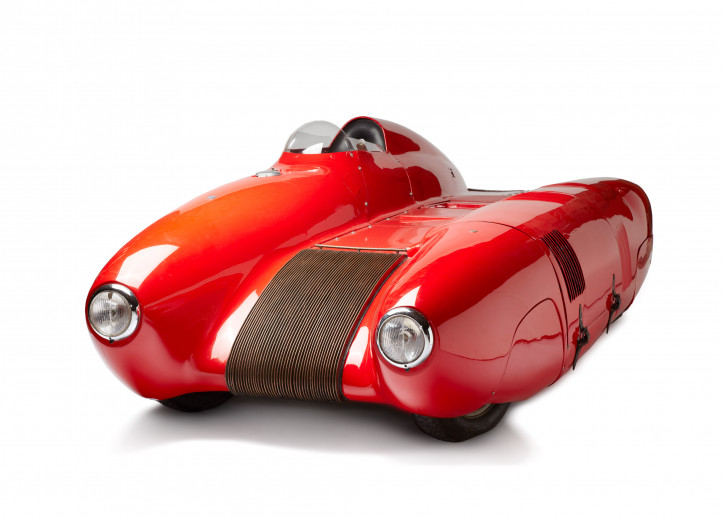
Translated from the Polish by Aga Zano


